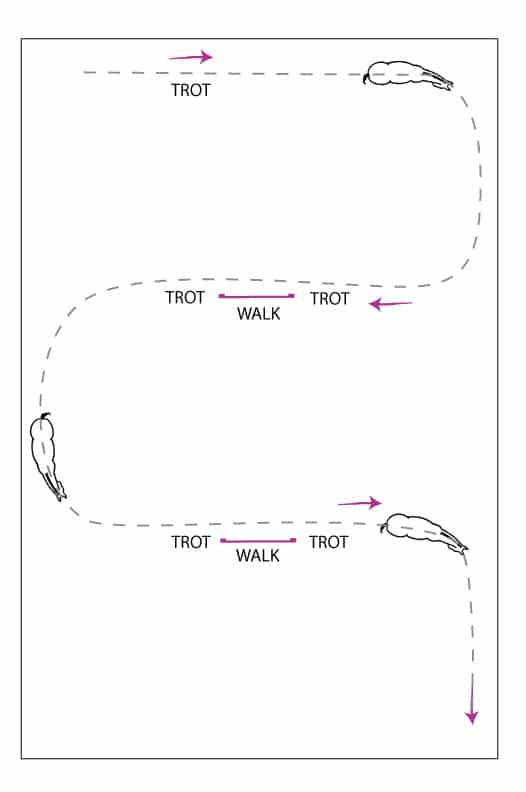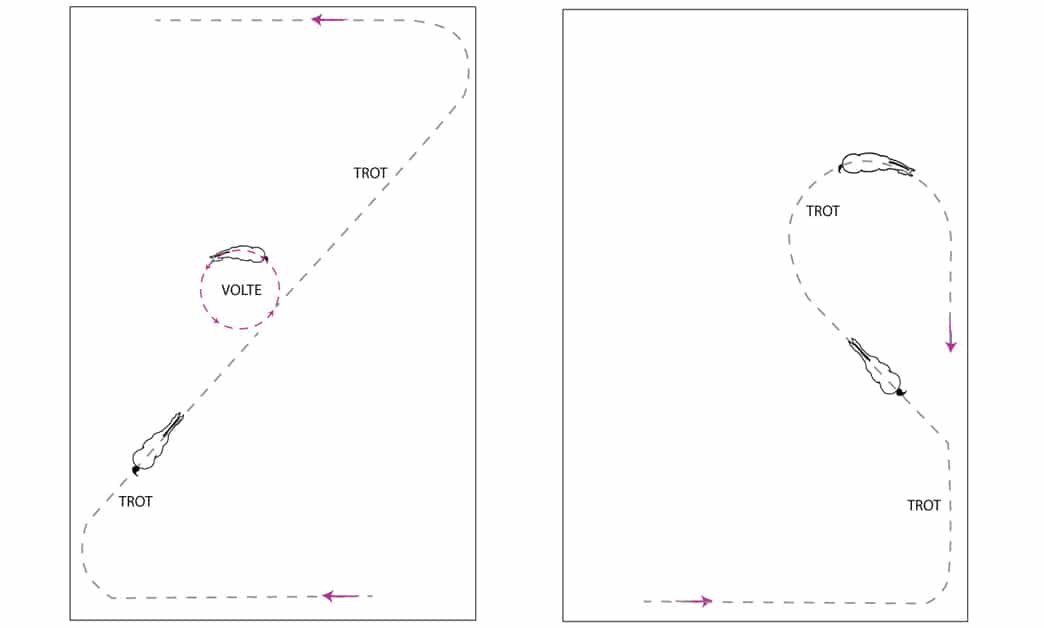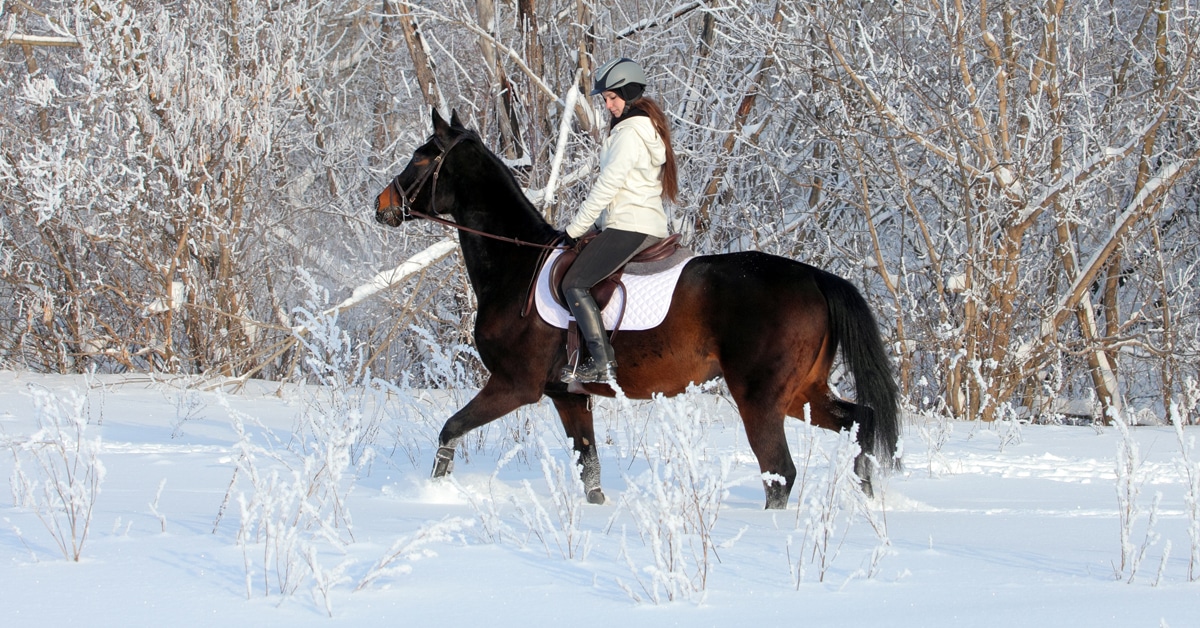We all want our horses to be happy and enthusiastic about their work, and eager to try their best in each session. But the horse doesn’t define success or failure in riding the way we do. It either feels good or it doesn’t. It’s enjoyable or it’s not. Sometimes they’ll bumble through a lesson or exercise or competition anyway, but a truly willing horse wants to work, and the energy they bring is attentive and responsive, keen to please.
Winning a horse’s willingness is abandoning the notion that the horse owes us as much. The horse owes us nothing. As caregivers and riders, it’s our responsibility to ensure not just our kindness, but proper nutrition and management of their health and psychological needs. Many behavioural problems under saddle can be resolved by addressing pain or discomfort, or diet and management conditions first. If the issues persist, we must take an honest look at ourselves, the tack we use, and how we communicate. Compassion, clarity, and consistency are paramount.
A wrong answer is still an honest attempt and tells us they are paying attention and trying to understand.
Recognizing a ‘Try’
Perhaps most important is trying to understand what the horse is thinking and feeling. By seeing things from their perspective and asking why they behave as they do, we open ourselves up to a deeper understanding. The horse is not at fault for failing to understand us; it is on us to communicate clearly.
So much of creating a positive experience stems from the rider recognizing a ‘try.’ A wrong answer is still an honest attempt and tells us they are paying attention and trying to understand. Any confusion can be clarified by breaking the ask into smaller elements and sincerely evaluating our own clarity and consistency. Refinement will come with time, but the try must be acknowledged. Nagging will dull or frustrate the horse, and punishing the wrong answer will discourage them from trying or push them to rebel – none of which are desirable if we aspire to form a healthy partnership.
Keeping variety in the day-to-day work can do wonders for keeping things interesting and fresh, as well as alternating mentally and physically strenuous lessons with relaxing activities. Varying the program with something fun or light after a challenging ride, such as a relaxing hack or some positive reinforcement groundwork, is as good for the horse as such considerations are for people.
Inspiring Spring in Their Step

Fig. 1
With horses that are reluctant or sluggish in any way, the goal becomes getting the desired energy using the least amount of aids. The moment you get the ‘go’, soften. As that reaction becomes sensitized, it can be refined.
For some, upward transitions can spark up the gas tank. On a trot serpentine (fig. 1), try coming to a walk or halt as you cross the centerline, then trot on after 2 to 4 steps. If the transitions are lethargic, add a halt, reverse 3 to 4 steps then trot on. Try to get a jump into the transition with the softest aids possible. Sometimes you have to be ‘loud’ once or twice with your aids to get their attention, so do what it takes to get the spring forward, then try to get the same reaction with the lightest aids possible.
Working on transitions within the gait can be beneficial as well, such as driving the horse into a lengthening or extension, or including canter work in the warmup before the trot schooling.
Practicing canter departures on a 20-metre circle can be tiresome work, but it helps get the horse’s energy up while developing their fitness. Including more schooling sessions in the outside ring and hacking once or twice a week can also help liven things up. Have fun with your own creativity as you explore what works!
Slowing Down Speedy
For the horse that wants to go everywhere in a hurry, learning patience is key. If things get hairy, take a walk break. Once you’re both ready to work again, regulate the rhythm with your seat, and change up your routine often to reduce anticipation. This doesn’t mean throwing more advanced stuff at them, as that would become overwhelming very easily, but do transitions in different places in the ring, and even strategize downward transitions where the horse tends to rush, and upward transitions away from home or going into to corners – wherever they tend to naturally slow down or are more tractable.
If crossing the long diagonal is like opening up on the racetrack, when you are on that diagonal and feel the nitro-boosters engage, walk and encourage the horse to settle. Circle as necessary. It’s not about the pattern, it’s about patience. Once you’ve returned to the rail in the opposite corner, pick up the trot again. Doing this as often as necessary will help break the habit of speeding up, and the horse may even start to anticipate the downward transition.
The more we can encourage the horse to pay attention to our seat with steering and transitions, the less of a tug-of-war it becomes.
Try trotting through after you’ve done the walk transition on the diagonal several times (which may be over a period of several rides), and maintain the rhythm with your seat and posting. If the horse begins to rush and ignores your posting rhythm, immediately half-halt with each “sit” and prepare for a volte (small circle, Fig. 2). Support the horse through the volte with your seat and supporting outside leg, holding the rhythm with your body, not your hands. Let the movement help to naturally control the rhythm so that as you return to the diagonal, you’ve got something more manageable. If the horse ignores the slowing aids, walk.

Fig. 2 & Fig. 3
When riding on the track gets rushed, try the teardrop (Fig. 3). Turn toward the centerline as you would ride a diagonal, but as you approach the centerline, semicircle back to the rail on the same side to change rein. Use strategic transitions and improvise with the pattern as needed.
Frequent changes of rein with serpentines and figure eights keep variety without a lot of difficulty, and provide many opportunities for strategic transitions within the gait, or to a walk.
The more we can encourage the horse to pay attention to our seat with steering and transitions, the less of a tug-of-war it becomes when we maintain a gait. The less we pull, the less they will pull, and the less of an argument it becomes.
When we redirect potential arguments and ask “how about this?” we can channel whatever enthusiasm your horse brings to the ride without standing in the way of it, and better create an inviting environment for them to participate.

